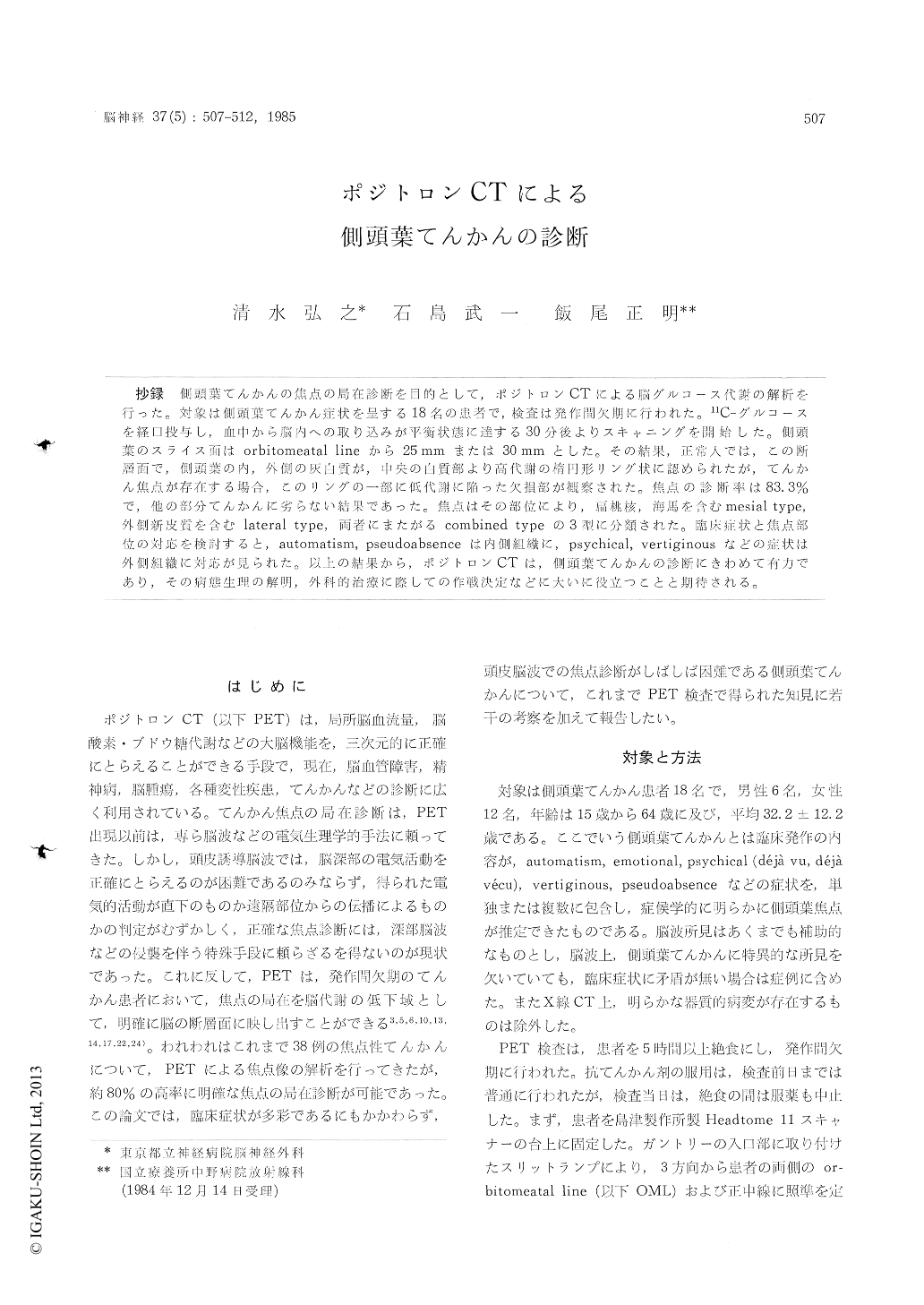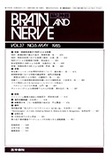Japanese
English
- 有料閲覧
- Abstract 文献概要
- 1ページ目 Look Inside
抄録 側頭葉てんかんの焦点の局在診断を目的として,ポジトロンCTによる脳グルコース代謝の解析を行った。対象は側頭葉てんかん症状を呈する18名の患者で,検査は発作間欠期に行われた。11C—グルコースを経口投与し,血中から脳内への取り込みが平衡状態に達する30分後よりスキャニングを開始した。側頭葉のスライス面はorbitomeatal lineから25mmまたは30mmとした。その結果,正常人では,この断層面で,側頭葉の内,外側の灰白質が,中央の白質部より高代謝の楕円形リング状に認められたが,てんかん焦点が存在する場合,このリングの一部に低代謝に陥った欠損部が観察された。焦点の診断率は83.3%で,他の部分てんかんに劣らない結果であった。焦点はその部位により,扁桃核,海馬を含むmesial type,外側新皮質を含むlateral type,両者にまたがるcombined typeの3型に分類された。臨床症状と焦点部位の対応を検討すると,automatism,pseudoabsenceは内側組織に,psychical,vertiginousなどの症状は外側組織に対応が見られた。以上の結果から,ポジトロンCTは,側頭葉てんかんの診断にきわめて有力であり,その病態生理の解明,外科的治療に際しての作戦決定などに大いに役立つことと期待される。
Positron emission tomography (PET) was per-formed in 18 temporal lobe epileptics. About 20 mCi of 11C-glucose was perorally administered to the patients and 30 minutes later scanning was started when the transport of 11C-glucose from blood to the brain tissue reached equilibrium. At the level of 25 mm above orbitomeatal line, the slice image of the temporal lobe shows a relative-ly high metabolic oval ring involving the amy-gdala, hippocapal formation and the hippocampal gyrus medially and the T1, T2 and T3 neo-cortices laterally in normal subjects. The epileptic focus, when detected on PET images, was ob-served as a defect in this oval ring. In 15(83.3%) out of 18 cases, the location of epileptic focus was confirmed as a low metabolic defect. This diag-nosis rate was higher than that of other focal epilepsy by PET study. The locations of foci were devided into three types : mesial (5 cases), lateral (4 cases) and combined (6 cases). The seizure symptoms of the patients were analyzed in terms of the correspondence to the focus types. The results showed that automatism and pseudo-absence had a close relation to the mesial and combined types and psychical, vertiginous or visual seizures correlated to the combined and lateral types. Visceral or motor seizures were in-duced equally by any focus types. These facts suggested that automatism and pseudoabsence were correlated with the mesial organs such as the amygdala and hippocampus and psychical, vertiginous or visual seizures had origin in lateral neocortices. Visceral or motor seizures were sup-posed to be the results of the spread from the temporal focus to the adjacent structures.
It was concluded that PET was very useful in localization diagnosis of temporal lobe epi-lepsy. In surgical treatment of epilepsy, in which the knowledge of the exact extent of epileptic foci is strongly demanded, PET study will offer in-valuable data to the strategy of operation and foreseeing its prognosis.

Copyright © 1985, Igaku-Shoin Ltd. All rights reserved.


